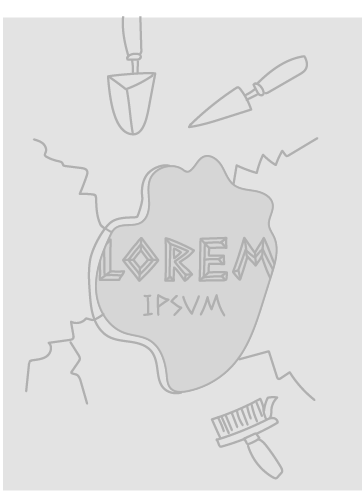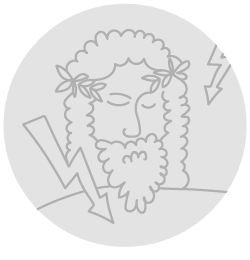Title of the work
Country of the First Edition
Country/countries of popularity
Original Language
First Edition Date
First Edition Details
Gary Crew, Old Ridley. Sydney: Hodder Children’s Books, 2002, 32 pp.
ISBN
Genre
Picture books
Target Audience
Children (Recommended for children aged 7+, though the confronting themes and challenging visual style suggest that the book might be more suitable for more mature readers. )
Cover

We are still trying to obtain permission for posting the original cover.
Author of the Entry:
Miriam Riverlea, University of New England, mriverlea@gmail.com
Peer-reviewer of the Entry:
Elizabeth Hale, University of New England, ehale@une.edu.au
Lisa Maurice, Bar-Ilan University, lisa.maurice@biu.ac.il

Gary Crew
, b. 1947
(Author)
Gary Crew, was born on September 23, 1947 in Brisbane, Australia. As a child he suffered from chronic illness, forcing him to stay home from school, during which time he read a lot of adventure stories. Isolation from his peers and the “stifling” religiosity of his upbringing did, however, fuel his love of literature. (McKenna and Pearce, 1999, p. 9). At sixteen he left school to take up a cadetship as a civil engineering draftsman. After graduating from the Queensland Institute of Technology, he worked in a drawing office as a design draftsman for ten years.
Gary Crew became a high school teacher in 1974 after undertaking a Masters of Arts in English. He began writing for children in 1985, deliberately targeting a broader audience of contemporary teenage readers. He taught at high schools in Queensland for eighteen years before becoming a full time writer.
Crew has collaborated with several Australian illustrators, including Peter Gouldthorpe, Steven Woolman, and Shaun Tan to produce picture books for older readers that offer a crossover for young adult readers. He has won multiple awards for his young adult fiction and picture book collaborations, including the Australian Children’s Book of the Year Award four times.
Gary Crew is Associate professor of Creative writing, Children’s and Adult Literature at the University of the Sunshine Coast, Queensland.
Bio prepared Margaret Bromley, University of New England, mbromle5@une.edu.au, brom_ken@bigpond.net.au

Marc McBride
, b. 1971
(Illustrator)
Born in Belfast, Northern Ireland, but now based in Melbourne, Australia, McBride is an illustrator of children’s and young adult’s fantasy books. He studied design at Curtain University in Western Australia, and his artworks have featured in a range of contexts including restaurant murals, television commercials, short films, magazines, and postage stamps. In 2000 he began illustrating Emily Rodda’s bestselling fantasy fiction series Deltora Quest. Among his other books are Old Ridley (2002), World of Monsters (2007) and How to Draw Mythical Creatures (2010).
Sources:
Profile at Austlit (accessed: August 14, 2019).
Bio prepared by Miriam Riverlea, University of New England, mriverlea@gmail.com
Summary
A young boy, Joachim, is fascinated by his elderly neighbour, Old Ridley, and his mysterious house.With its spiralling turrets and wild, overgrown garden, the building seems enchanted. Joachim rarely sees the reclusive old inventor, but rumours abound as to what he is up to.
"Some said that he had created light, others that he could see in the dark; some said that he could fly, others that he could make himself disappear. It was even whispered that he was working on the secret of eternal life." (unpag.)
One afternoon, Joachim looks out and sees old Ridley sitting at an upstairs window, and their eyes meet. Shortly after this unsettling encounter, the boy learns that the old man has died. Workmen arrive to carry away his possessions and furniture, his machines and scientific instruments. Empty and abandoned, the house and garden fall into disrepair. One day when his tutor fails to arrive for their lesson, Joachim scales the garden wall and sets out to explore old Ridley’s house. He discovers a massive stained glass window which tells the story of Eos, the goddess of the Dawn, and her lover Tithonus. In text and image the window recounts how Eos begged Zeus to make Tithonus immortal, but forgot to ask that he also remain eternally young. Tithonus grows older and older, eventually turning into a chirping cicada.
Then Joachim goes in search of the window from which he saw old Ridley. While the rest of the house is empty, in this room there remains an antique chair and desk. On the surface of the desk is an inkwell, an old fashioned pen, and a sketch of Joachim peering out of his attic window. Feeling certain that the items have been left there for him, Joachim snatches them up and heads home. But when he attempts to write his name using the pen, he forms an R instead of a J, and when he tries to draw on the paper, he unwillingly forms shapes that resemble the inner workings of a clock, and then a cicada. Feeling as if Old Ridley has cursed him, he confesses to his tutor what he has done, but his concerns are brushed aside. He tries to write about what has happened, only to find himself writing Ridley’s story instead. He has become the old man, and the illustration on the facing page shows him clawing at his face in horror.
Analysis
Gary Crew’s Old Ridley is an unsettling picture book for older readers that explores the notion of everlasting life being both alluring and nightmarish. Its presentation and themes recall two of Crew’s other books, The Viewer (1997), with Shaun Tan, and Serpent’s Tale (2010), illustrated by Matt Ottley. These works have in common an interest in temporality, magic objects and the supernatural, and the intention to engage, confront and disquiet readers. The blurb on the endpapers of Old Ridley states that "this curious tale was inspired by the myth of Tithonus, a mortal youth, and Eos, immortal goddess of the dawn." After briefly recounting the myth, it concludes "but just what this has to do with the story of Joachim and old Ridley, you will have to find out for yourself…"
In fact the myth plays only a minor part in the narrative, which also features gothic and steampunk aesthetics, and references the figure of Albert Einstein. One image of whitehaired old Ridley resembles the scientist, and his famous equation, e = mc2, is interwoven into one the illustrations. The myth of Tithonus and Eos is most prominent in McBride’s illustration of the stained glass window which Joachim finds in Ridley’s abandoned house. Eos reaches a huge hand towards the beholder, while Tithonus is shown gradually wasting away as he grows older, yet never dies. The lovers’ names are inscribed several times on the glass, and there are scrawled snatches of handwritten text, wrapped around fluted classical columns, which tell the story. The stained glass window evokes the notion of a tradition in which fragments of classical material, both textual and iconographic, are appropriated. But the metaphor is not fully explored.
McBride’s illustrations are surreal and fantastic. Their style recalls the work of another Australian illustrator, Shaun Tan, who also explores the fusion of mechanical and organic forms, though McBride favours a stronger colour palette. The images suit the dark mood of Crew’s narrative, and contain coded references to the Tithonus myth that supplement the oblique allusions within the written text. Cicadas appear on old Ridley’s jewelled ring, and on the pattern of the carpet on the grand spiral staircase in his house. But it is difficult to imagine children warming to the pictures in the book. The back cover features a disturbing image of a pallid human face with bulging eyeballs, connected to electrical wiring.It is bound within a gilded frame that is plugged into a cord that extends from the helmet old Ridley wears on the front cover.
The myth is referenced as a story about immortality, but it is left to conjecture whether old Ridley, and Joachim after him, embodies the spirit of Tithonus (they do wear his symbol, the cicada, on their ring). The old inventor’s experiments seem to be cast as unnatural and overreaching, a form of hubris. Yet this suggestion, along with the book’s exploration of a nexus between youth and old age, the power of eye contact, and the rendering of the human form within a portrait, remains obscure.


